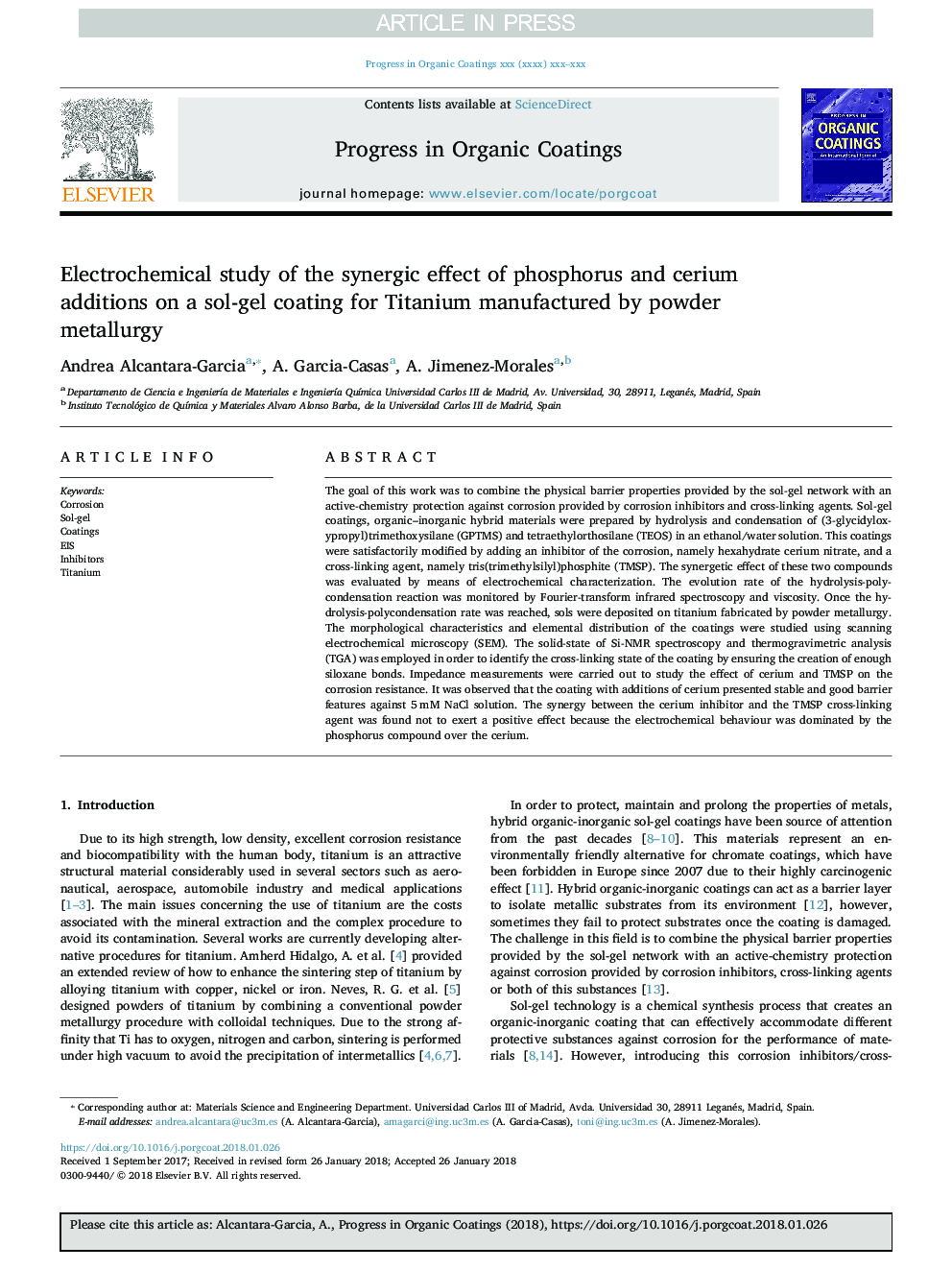| Article ID | Journal | Published Year | Pages | File Type |
|---|---|---|---|---|
| 11003504 | Progress in Organic Coatings | 2018 | 8 Pages |
Abstract
The goal of this work was to combine the physical barrier properties provided by the sol-gel network with an active-chemistry protection against corrosion provided by corrosion inhibitors and cross-linking agents. Sol-gel coatings, organic-inorganic hybrid materials were prepared by hydrolysis and condensation of (3-glycidyloxypropyl)trimethoxysilane (GPTMS) and tetraethylorthosilane (TEOS) in an ethanol/water solution. This coatings were satisfactorily modified by adding an inhibitor of the corrosion, namely hexahydrate cerium nitrate, and a cross-linking agent, namely tris(trimethylsilyl)phosphite (TMSP). The synergetic effect of these two compounds was evaluated by means of electrochemical characterization. The evolution rate of the hydrolysis-polycondensation reaction was monitored by Fourier-transform infrared spectroscopy and viscosity. Once the hydrolysis-polycondensation rate was reached, sols were deposited on titanium fabricated by powder metallurgy. The morphological characteristics and elemental distribution of the coatings were studied using scanning electrochemical microscopy (SEM). The solid-state of Si-NMR spectroscopy and thermogravimetric analysis (TGA) was employed in order to identify the cross-linking state of the coating by ensuring the creation of enough siloxane bonds. Impedance measurements were carried out to study the effect of cerium and TMSP on the corrosion resistance. It was observed that the coating with additions of cerium presented stable and good barrier features against 5â¯mM NaCl solution. The synergy between the cerium inhibitor and the TMSP cross-linking agent was found not to exert a positive effect because the electrochemical behaviour was dominated by the phosphorus compound over the cerium.
Related Topics
Physical Sciences and Engineering
Chemical Engineering
Process Chemistry and Technology
Authors
Andrea Alcantara-Garcia, A. Garcia-Casas, A. Jimenez-Morales,
